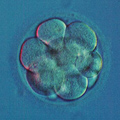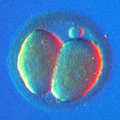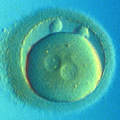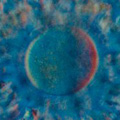Embryology 101
Medieval theories of mice originating from dirt and discarded rags aside, it had been noted since times immemorial that life begets life. Another scientific observation from the same era is that the offspring resemble their parents. We will never fully know the views of our ancestors on the problem of sex and reproduction, but throughout the millennia and across different cultures the virgin birth had always been associated with Divine Intervention. This tells us that that immaculate conception (parthenogenesis) was considered physically impossible in humans. Father might not be always known, but he must always be present. Each of us has half of our genome coming from our mother and another half from the father.
An embryologist in the IVF lab witnesses the creation of human embryos daily as a part of his/her routine job. Once the egg is fertilized by sperm, the genetics of a new human being is established. While the embryo progresses through the stages of preimplantation development, it is the embryologist's job to keep it safe and healthy. Once the embryo is transferred and implanted into mother's uterus, it is up to the mother to stay safe for the sake of her baby.
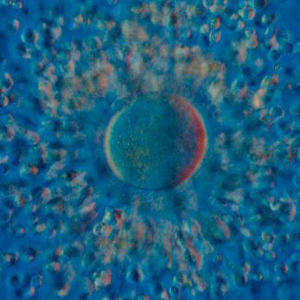 Day 0: Oocyte
Day 0: Oocyte Day 1: Zygote
Day 1: Zygote Day 2: Two Cell Embryo
Day 2: Two Cell Embryo Day 3: 10 Cell Embryo
Day 3: 10 Cell Embryo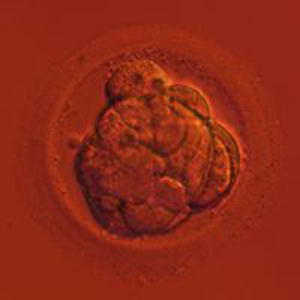 Day 4: Morula
Day 4: Morula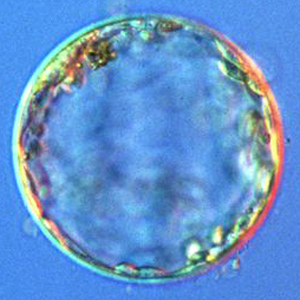 Day 5: Blastocyst
Day 5: Blastocyst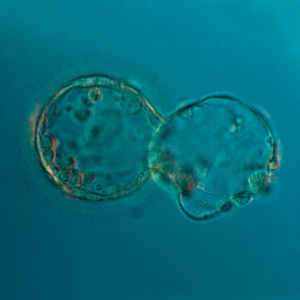 Day 6: Hatching Blastocyst
Day 6: Hatching Blastocyst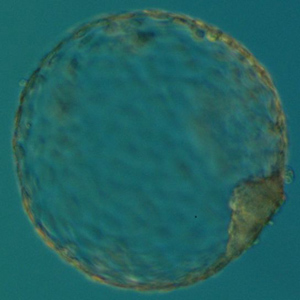 Day 7: Hatched Blastocyst
Day 7: Hatched Blastocyst
Below are the specifics of preimplantation embryo development in human IVF:
- Day 0 - Oocytes are placed in the same droplet of culture media with spermatozoa. Fertilization takes place at night. Assisted fertilization (ICSI) may be performed for the patients with oligozoospermia.
- Day 1 - Fertilized oocytes, now called Zygotes are at the two pronuclei (2PN) stage meaning that oocyte nucleus and sperm nucleus are visible as two separate nuclei inside one cell. By the end of Day 1 the zygote divides (cleaves) into two cells.
- Day 2 - Two- to four-cell stage embryos. This is the so-called "cleavage" stage when the embryo divides (cleaves) to produce more cells, called blastomeres, from the original one-cell zygote.
- Day 3 - The second day of the cleavage stage. The embryo is at the 6- to 16-cell stage. The embryo does not grow in size, so each blastomere of an 8-cell embryo is exactly 1/8th the size of the original zygote. Visually unremarkable but an extremely important event takes place at the 8-cell stage, the embryo genome wakes up! The process is called genome activation and marks the point from which embryo development will be controlled by the genes, not an ooplasm.
- Day 4 - The first so-called "morphogenetic event" in embryo development occurs. The 16 to 20+ cell embryo starts compaction to form the Morula.
- Day 5 - The morula starts the process called cavitation and forms a Blastocyst. This is the stage when cell differentiation (triggered already at the morula stage) becomes evident. The outside, Throphectoderm (TE), cells will form the embryonic side of the placenta, and the Inner Cell Mass (ICM) cells will form the embryo proper.
- Day 6 - The Blastocyst expands and hatches from its zona pellucida. The zona pellucida is equivalent to the eggshell in a chicken's egg; it is formed during oocyte growth and protects the oocyte and then preimplantation embryo from its surrounding.
- Day 7 - The hatched Blastocyst implants into the uterine wall, this is the end of an independent, preimplantation stage of embryo development.



